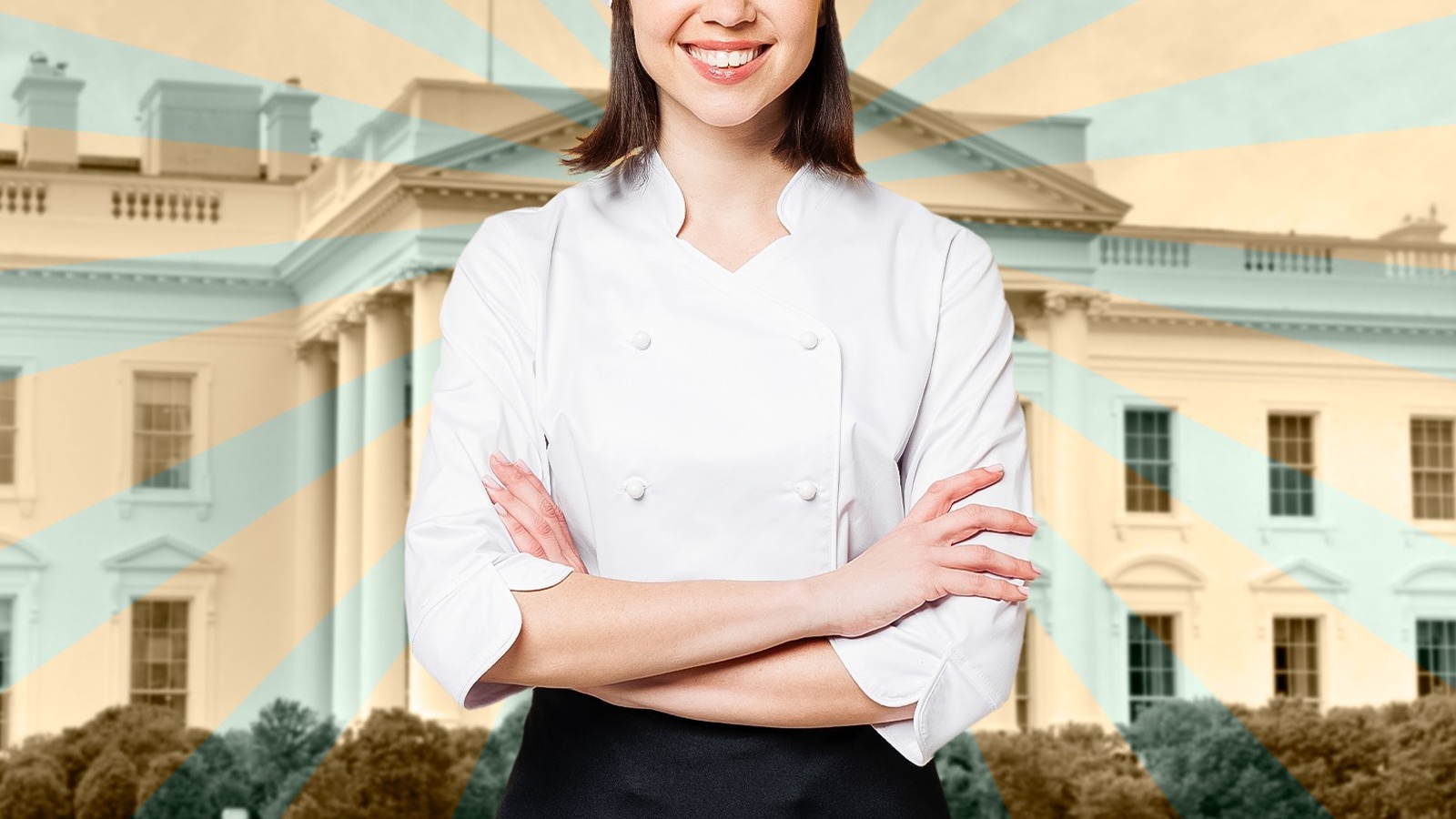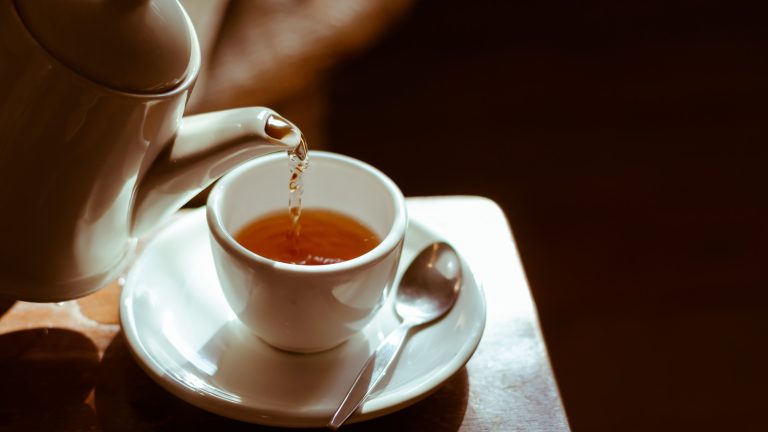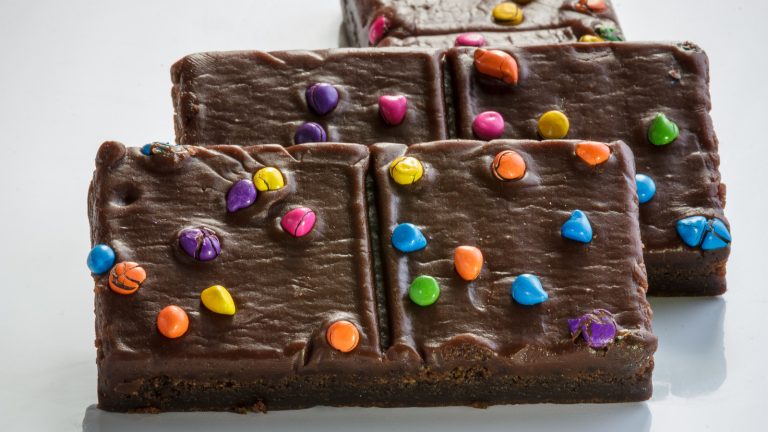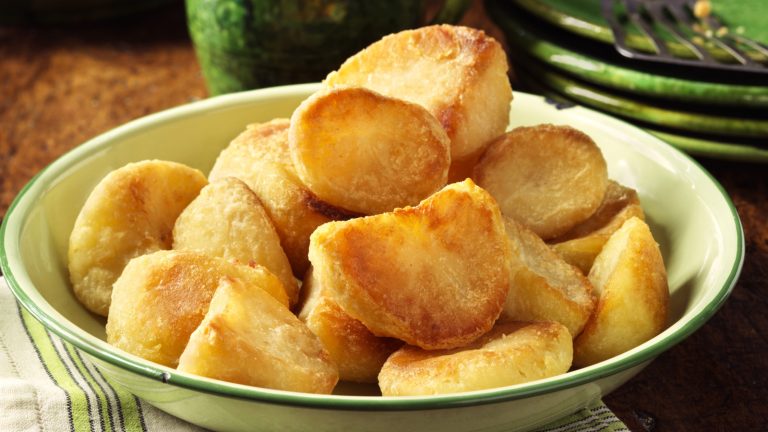In 1961, First Lady Jacqueline Kennedy created the position of White House executive chef, and hired French chef René Verdon, from one of her favorite restaurants, La Caravelle, for the position. Although there had been teams of chefs cooking food for the presidents and first families since the founding of the United States, Verdon was the first professionally trained chef to be hired in the official government role. Previous kitchens were run by slaves, caterers, and Navy stewards.
Only a handful of chefs have served in the White House since Verdon. Like the Secret Service, the close proximity of the role requires an intense and in-depth security clearance. Plus it’s a lot of work for little pay. A White House chef is on call 24/7 but typically begins their day around 6 AM and ends after midnight for a paycheck between $80,000 – $100,000; far below what an executive chef would likely earn working in a private restaurant.
White House chefs tend to put politics aside and be rather tight-lipped about the president and first family’s private lives. But some stories are too outrageous to keep to yourself, which is why a few White House chefs have been spilling the tea from the three kitchens at 1600 Pennsylvania Avenue about what it’s really like working in the White House kitchen.
Some first families like their food spicy
President George W. Bush and First Lady Laura Bush may have different political palettes than President Bill Clinton and First Lady Hillary Clinton, but both shared a love for White House executive chef Cristeta Comerford’s homemade enchiladas, complete with homemade tortillas, Comerford told NPR. The Bushes in particular preferred Tex-Mex and Southwestern food. Although it wasn’t the only style of food they ate at the White House, Laura insisted on livening up dishes with chilies and hot sauces for a spicier flavor, White House executive chef Walter Scheib wrote in his book “White House Chef.”
Like the Bushes, the Clintons were neither foodies nor picky, but preferred their dishes spicier than most. “Mrs. Clinton had about 50 or 60 different hot sauces that she bought and liked to use, and Mrs. Bush just had one that she liked, but she would use it on just about everything,” Scheib shared with Vice.
Homemade tortillas were a must, especially the Bushes. As White House chef John Moeller shared with The Daily Herald, Laura Bush told him that as they are from Texas they prefer fresh-made corn tortillas instead of flour tortillas. She even had her housekeeper, Maria, show Moeller the ingredients to buy and how to make the family’s favorite corn tortillas.
Not everything is homemade
When Rene Verdon began his tenure as White House executive chef he championed fresh seasonal, local food, growing vegetables on the White House roof and herbs in the East Garden. But Lyndon B. Johnson’s family preferred frozen and canned vegetables – a difficult pill for the French chef to swallow. But even modern day White House chefs deal with first families preferring store-bought versions to their homemade recipes.
It was White House executive chef Walter Scheib’s first day in the White House kitchen when Chelsea Clinton requested pancakes, White House chef John Moeller recalled in a conversation with Men’s Journal. Scheib insisted on using real maple syrup, but the First Daughter preferred Aunt Jemima. In addition to store-bought syrup, Chelsea enjoyed boxed macaroni and cheese more than homemade versions, Moeller shared with The Hill. President Barack Obama preferred store-bought hamburger buns instead of White House executive chef Cristeta Comerford’s homemade brioche buns, the chef told NPR. Then there’s Donald Trump’s insatiable appetite for McDonald’s.
“This job isn’t for a big ego trip,” Moeller told The Daily Herald. “You are in the back there, you do not step in front. You have to listen to them, you have to see what they want. You can make a great dish, and if they don’t like it, they don’t like it,”
White House food tasters are a myth
During medieval times, nobles often employed food tasters to take a bite of their food and drink beforehand to ensure it hadn’t been laced with deadly poisons by their enemies. One may think that there must be a similar role to protect the president, but no one is trying the president or first family’s food before they eat it, White House executive chef Walter Scheib shared with the Washingtonian. But don’t worry, there are plenty of security protocols in place to protect them.
The White House chef position requires a rare high-end security clearance called Top Secret Presidential Proximity, Scheib explained to the Washingtonian. Additionally all food and ingredients are examined before getting anywhere near the president or his family, even a seemingly simple bowl of pretzels have been screened.
In a conversation with Vice, Scheib opined that the myth of a White House food taster began when Obama was in office and it was alleged he didn’t eat at an event held by a Republican senator because his food taster was unavailable. “I am honestly very apolitical, but if you look at the outlets that were spreading that story it’s fairly obvious why it was being spread,” Scheib said.
There is a gender divide
Food at the White House doesn’t delineate along party lines, rather it delineates along gender lines, White House executive chef Walter Scheib shared with Vice. “Presidents are still eating their stereotypical guy food, while First Ladies are laboring to try to get people to dine responsibly,” he said.
First Lady Michelle Obama’s push to encourage Americans to increase nutrition in food and live a healthier lifestyle is well known, but Hillary Clinton, and Laura Bush were also adamant about using organic food and were more adventurous in terms of trying new food than the presidents, Scheib told Vice. Laura Bush was First Lady shortly after the concept of Whole Foods and organic foods were introduced near her home in Austin, Texas, and she was really into it, he noted.
“Mrs. [Laura] Bush, she loved avocados. She even told me, ‘We could eat avocados almost every single day.'” White House chef John Moeller recalled in a conversation with The Hill. For the Clintons it was artichokes. “I probably put more artichokes on the menu than ever with them.”
The presidents, however, would have been just as happy with a barbecue pit or a burger joint in the basement, Scheib shared with Vice, noting that Barack Obama would be photographed eating a triple cheeseburger with a side of fries, while his wife was actively advocating for healthy eating.
Hanging out in the kitchen
There are three separate kitchens in the White House: One on the second floor for the president and the first family, one on the ground floor for big banquets, and a pastry kitchen on the main level. For the most part, the first family doesn’t cook or bake, that’s what the White House chefs are there to do after all. But sometimes it’s nice to decompress and hang out in the kitchen.
White House chef Martin Mongiello, now the CEO of the United States Presidential Culinary Museum, told People President Clinton would chat with the kitchen staff for an hour or two occasionally while Hillary would grab a snack while wearing a bright green facial mask. Chelsea Clinton was in the kitchen learning how to cook with White House executive chef Walter Scheib. She even learned how to make pie crust with White House pastry chef Roland Mesnier.
The menu changes for hard times
The White House chefs top priority is serving the first family as a private chef. The president may be the leader of the free world but the first lady is the leader of the family and is ultimately the one overseeing the chefs and approving menus. However the chefs are aware of a need to avoid a hangry president, and will alter what’s for dinner at a moment’s notice due to scandals, wars, or other pressure-filled moments.
Part of being a White House chef is keeping up with the news and current events, White House executive chef Cristeta Comerford explained to NPR. For example, if the president experiences a stressful day, the White House chef is more likely to serve comfort foods like grilled cheese and tomato soup. It’s a tip Comerford learned from one of the White House butlers, she told NPR.
White House executive chef Walter Scheib similarly told Vice that as he was researching recipes for a book he’s working on, he noticed that after the terrorist attacks on Sept. 11, 2001, the food shifted from being flamboyant and forward-thinking to safe and soul-satisfying. “Part of being the White House chef is being aware of what mood the house is in and what’s appropriate for the time — what kind of food should you be serving?”
The true national food is barbecue
One reason White House executive chef Rene Verdon resigned in1965 after roughly four years as White House chef was because he was tired of cooking barbecue. Few believe the number of barbecue requests the White House kitchen received is the sole reason Verdon resigned, but when Henry Haller took over the job as White House executive chef under Johnson, he too noted there was a lot of barbecue during the Johnson years. In fact, Johnson is credited with hosting the first barbecue at the White House, at which he served Texas-style barbecue ribs.
But Johnson is far from the first to enjoy barbecue. President George Washington mentions barbecues in his diaries, including a barbecue that lasted for three days and President Dwight D. Eisenhower set up a portable grill for his personal use in the White House when he was in office.
White House executive chef Walter Scheib is not surprised barbecue is so popular among the first families. As he told Vice, the national food of the United States is actually barbecue — not apple pie or hot dogs because barbecue is in every region in the country and there are many different takes on it. From dry rubs to glazes, vinegar-based tangy sauces to sweeter, spice and pepper-infused sauces, or even smoking meat, there are many ways to barbecue, and there are different foods to barbecue.
The first family pays for their own groceries
At the end of each month, the first family receives a bill for food and incidental expenses like dry cleaning, toothpaste, and other toiletries. Although the family selects the food items and brands themselves, the bill is often higher than anticipated, which is why every first family has complained, White House chief usher Gary Walters, who oversees the White House kitchen staff, shared with National Geographic. Luckily for the first family’s budget, anything that is prepared for an official government function, whether that be a dinner for hundreds of guests or a more intimate cabinet meeting, is paid for by taxpayer dollars.
Groceries are purchased throughout the week from various Secret-Service-approved commercial suppliers, as well as farmers markets, grocery stores, and sometimes a local butcher shop, Walters told National Geographic. Given the high levels of security, the First Families’ needs are over-anticipated food wise, and personal favorites are always kept on hand because it’s nearly impossible to just go to the store and pick up something quickly, White House executive chef Martin Mongiello explained to People magazine.
Food service comes at the push of a button
During his first term, President Donald Trump famously had a wooden box adorned with the presidential seal containing a red button that he pushed regularly on the resolute desk. When he pushed the button, a butler would shortly arrive carrying a Diet Coke on a silver platter. But Trump isn’t the only president who has requested food or drinks from the White House kitchen staff with the push of a presidential call button.
When Barack Obama pushed the button he would receive tea, according to an excerpt from billionaire Richard Branson’s autobiography, “Finding My Virginity.” His favorite tea staffers made sure to always have on hand was Black Forest Berry Honest Tea, according to Honest Tea co-founder Seth Goldman.
If Bill Clinton or any other president wanted a particular treat, White House executive chef Martin Mongiello told People magazine, they would use “mahogany boxes with gold presidential seals” scattered around the White House to ring the kitchen. “The staff kind of follows around the president or vice president with the box,” Mongiello explained to People.
Cooking all kinds of diets
President Bill Clinton became a vegan in 2011, so he had fewer dietary restrictions while living in the White House. But he did have dairy and gluten allergies that made White House pastry chef Roland Mesnier’s job a little trickier, the chef shared in his cookbook memoir “All the Presidents’ Pastries: Twenty-Five Years in the White House.” Clinton was allergic to chocolate, butter, and dairy products. Mesnier adjusted by creating fresh fruit desserts, the pastry chef told Erin Bakes.
It’s not just the first family’s dietary restrictions that a White House chef must adhere to; they must also consider dietary requirements of the first family’s guests, government officials, and other dignitaries. This means that when the Clinton’s invited Vice President Al Gore and his wife, Second Lady Tipper over to the White House for dinner, the staff had to ensure Tipper’s meal followed the Pritikin diet.
Given the strict dietary rules surrounding the Pritikin diet, the White House chefs opted to make a seed bread-stuffed capon, White House executive chef Martin Mongiello shared with People magazine. The only problem was that the dish required millet, and in the ’90s, Whole Foods and other specialty organic food stores were rare. After two different shoppers went to roughly 15 different stores and were unsuccessful, Mongiello wound up buying millet at a hardware store, in a bag marked ‘bird seed.’ “I cleaned it, prepped it and served the capon, and no one was the wiser,” Mongiello told People.
Cheat meals and sneaking candy are regular occurences
Hamburgers are a favorite amongst most presidents, including Donald Trump, Barack Obama, and Bill Clinton, White House chef Andre Rush told the NY Post. Pizza was another favorite cheat food for Obama, Rush said, along with making his own chili. “I’ve seen a couple of the presidents sneak an unhealthy treat up to their quarters or pass through the kitchen, grab something and keep going — like a piece of candy. Or maybe they have a quirk where they only eat one color of M&Ms,” he told the NY Post.
However, not every President gets to nosh on hamburgers as often as he wants to. Obama, for example, was often forced to eat on the healthier side, per Michelle Obama’s request. “You can’t just say, ‘I’m going to implement things with kids and healthy eating’ and not implement yourself,” Rush explained to the NY Post.
Of course, the White House chefs report to the first lady but that doesn’t stop them from slipping the president a treat every now and then. As White House pastry chef Roland Mesnier shared in an interview with the local Washington, D.C. ABC News affiliate WJLA in 2019, although Nancy Reagan told him to never give President Ronald Reagan chocolate, the White House chefs would make steak, mac-and-cheese, and chocolate mousse for the president regularly when Nancy was out of town.
Last minute requests happen often
White House chefs have to be able to cook for a large state dinner without much notice. Working under pressure, under a time crunch is part of the gig. But sometimes last minute requests overwhelm even the greatest chefs.
In 1982, White House pastry chef Roland Mesnier was working with First Lady Nancy Reagan on the dessert that was to be served at a state dinner. After rejecting all of the desserts Mesnier created, the First Lady informed the pastry chef — two days before the dinner — that she wanted ornate sugar baskets filled with sugar tulips to be served as dessert, which Mesnier explained is an incredibly complex task. Mesnier tried to push back, but Nancy insisted, so he worked day and night for two days to complete the dessert on time.
Another request for Mesnier came from Sen. Ted Kennedy, who requested green bean sorbet be added to the dessert menu for the White House’s St. Patrick’s Day celebration. Although Mesnier made sure to make as many traditional Irish desserts as possible, the Green Bean Sorbet sticks out because it was the most disgusting dessert he had ever created, he told Erin Bakes. Adding, “The guests who tried it did not look like they were in heaven.”
Quirky palettes must be accounted for
Being president of the United States doesn’t change your taste buds. While some presidents have more peculiar tastes like William Henry Harrison and James Garfield’s penchant for squirrel meat, other presidents had quirkier taste buds like Ronald Reagan who disliked tomatoes and Brussel sprouts, according to Nancy Reagan’s autobiography. And then there was President William Howard Taft who did not care for eggs.
George H. W. Bush banned broccoli from the White House kitchen and Air Force One. The White House chefs were not expecting the broccoli ban and had previously ordered 10 tons of broccoli from their suppliers. Instead of being incorporated into dishes at the White House, the broccoli was donated to a local Washington, D.C. food shelter.
President Richard Nixon banned soup from the White House menu after a 1969 state dinner honoring Canada because he said he wanted to speed up state dinners. Nixon reasoned that men don’t typically enjoy soup so it would be an easy course to eliminate, according to Nixon’s chief of staff, H.R. “Bob” Haldeman’s diary. But as the Ottawa Citizen reported, Haldeman wasn’t convinced Nixon had divulged the real reason he was upset and asked Nixon’s valet, Manolo Sanchez, if there were any issues with the president’s clothing. As it turned out, Nixon had spilled soup down his vest.





